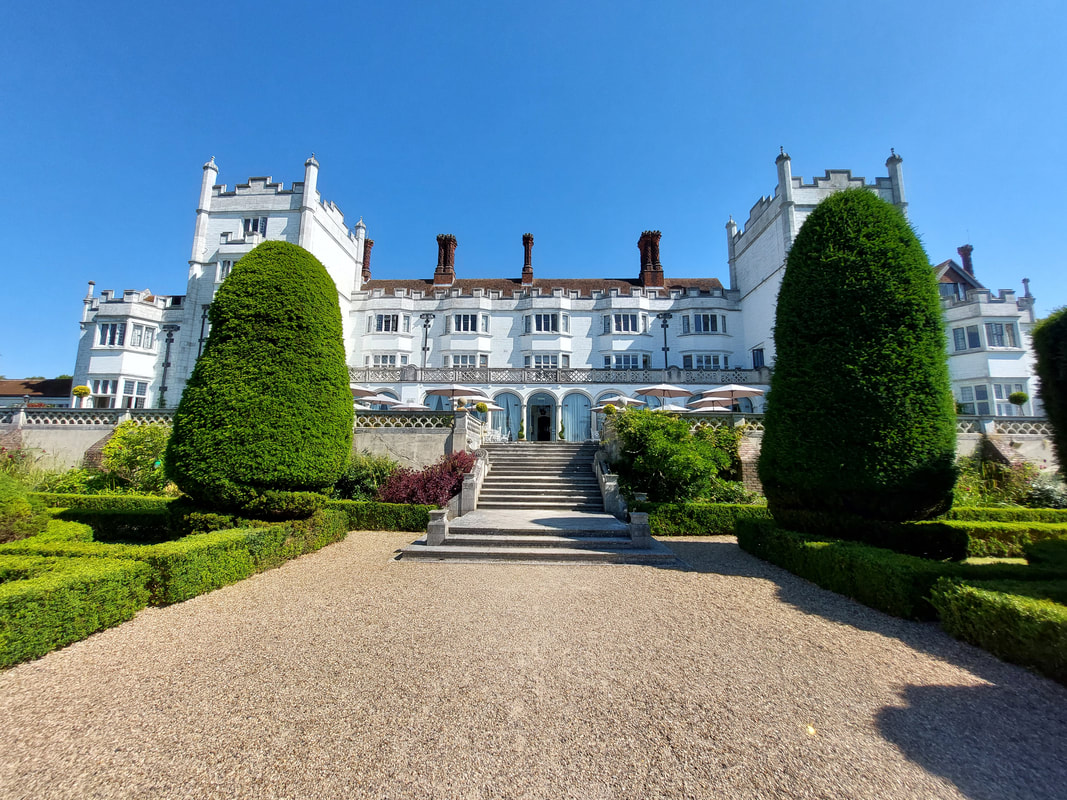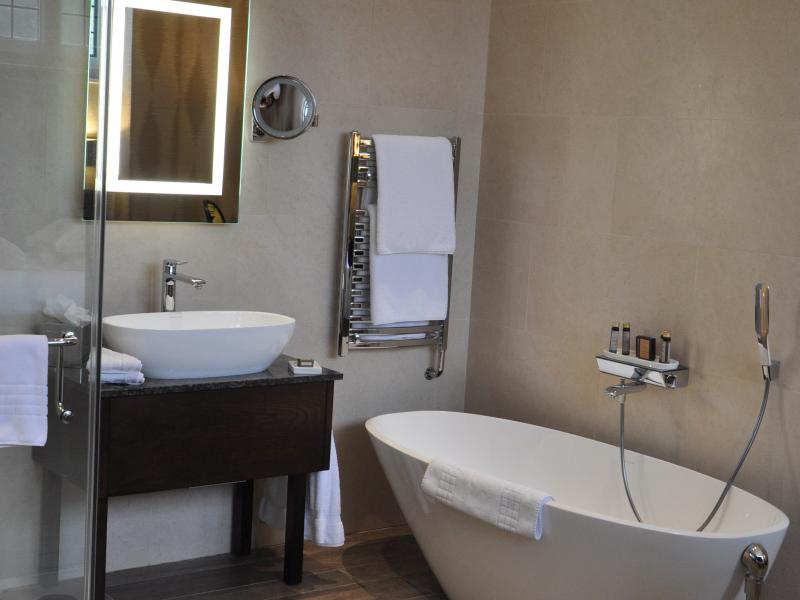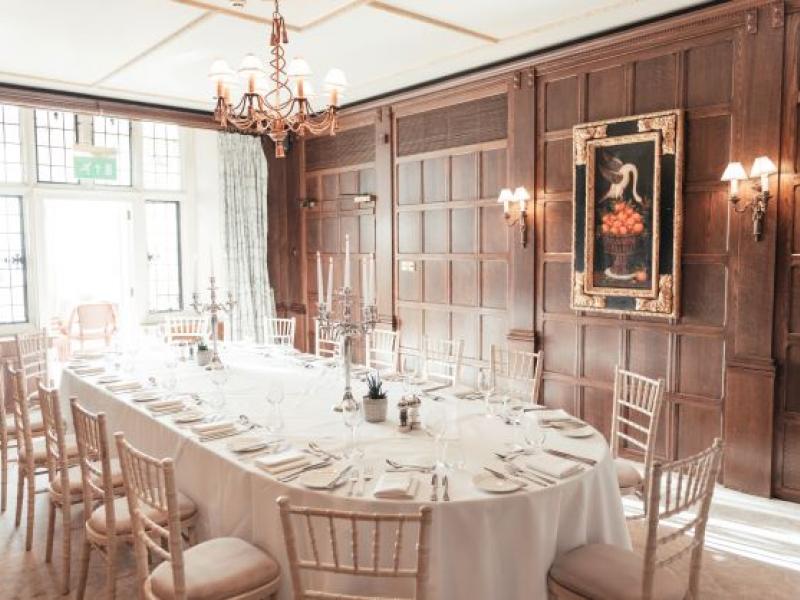'Danesfield House'-Marlow, Buckinghamshire. UK
Next Retreat - Saturday 28th Sept - Tuesday 1st Oct 2024
The House (See photo gallery below)

Originally some 4,000 years ago, the site was reputed to have been a resting place of nomadic tribes who paused to hunt nearby land and fish in the then untamed river. If you stand on the crest of the bank between the present house and the river and look west there is a steep ravine directly in front of you which is the remnant of the ramparts of a prehistoric fortification. Because of the ample game and the discovery of flint within the chalk-based cliffs, the site became a settlement throughout the ages and although not named “Danesfield” until many years later, this name originated from the Danish adventurers who made an encampment here. The next recollection of the estate is the transfer of land ownership in 1664 to an Edmund and Margaret Medlycott, they built what is assumed to be the first property on the site, known at that time as “Medlycotts” and there they lived with son James for over 60 years. Very little is known about the family and their name seldom occurs in any local record.
In 1725 James Medlycott, or his executors, rented “Medlycotts” to a Mrs Morton, whose son John was to be the creator of the first Danesfield House. John Morton purchased the estate freehold in 1750 completely rebuilding the house and naming it Danesfield. At this time John Morton was a Barrister appointed as Attorney General to Queen Charlotte, he was also a contemporary in Parliament of William Pitt, as MP for Abingdon (1747-70), New Romney (1770- 74) and Wigan (1775). The estate was not as large as it is now until John Morton later purchased land surrounding the property. After his death, his widow continued to live at Danesfield for some years, but eventually sold the estate in 1787 because of financial difficulties.
The new owner was Robert Scott- Murray of Wimpole Street, London, the heir to a fortune made in the world of commerce. He rebuilt the house erecting a roomy building of the classical Georgian type, which remained standing for more than a century. Robert Scott - Murray died in 1808 and is buried at Medmenham. The property remained with his descendants – most notably his nephew, Charles Robert Scott-Murray, whose conversion to the Catholic faith in 1845 saw the erection of a Roman Catholic Church at Marlow and subsequently, a domestic Chapel at
Danesfield. It was Charles who diverted the Marlow Road away from the river to its present route and constructed the footbridge over the Henley Road that can be seen today. He died in August 1882 and was buried in the founder’s tomb of the Church he had built in Marlow and the estate was passed to his son. A period of agricultural depression had set in and the value of land was on the wane. The house was let to successive tenants, who came principally for shooting and was eventually sold in 1897 to Mr Robert William Hudson who upon completion of the new mansion in 1901 demolished the old house and chapel. Robert William Hudson’s work was scarcely completed when he decided to sell.
Following Hudson’s sale of the house it was then owned for a short time by a property speculator, Mr Hossack who passed it on a couple of years later to Mrs Arthur Hornby Lewis, who made many changes to the interior of the building and the layout of the gardens. Mrs Hornby Lewis died in 1930 and because she was so attached to Danesfield made the request to be buried in the grounds, this wish was observed. When her trustees found it difficult to dispose of the estate with the deceased owner still resident, permission was sought to transfer the coffin to Hambleden cemetery in 1938. A period of financial depression led the trustees to seek permission to sell the estate. It passed to Mr Stanley Garton, who made preparations to take up residence, renovating the house and improving the amenities. They had hardly settled in before war clouds began to gather. When trouble was imminent, Colet Court School was evacuated from Hammersmith to Danesfield with an influx of approximately 80 boys.
As war proceeded Danesfield was requisitioned as a base to develop the intelligence Section of the Royal Air Force (Reconnaissance and Photography Section) in 1941, Mr Garton moved to Kingswood and Colet Court School departed. The property remained in the hands of the RAF until 1977 when it was sold to Carnation Foods to be used as their Corporate Headquarters.
Danesfield House Hotel opened on the 1st July 1991 as a luxury country house hotel with a charm and character that cannot be compared. It is a property with a most unusual history and when walking around the grounds it is easy to imagine the strange events that must have taken place over the centuries.
In 1725 James Medlycott, or his executors, rented “Medlycotts” to a Mrs Morton, whose son John was to be the creator of the first Danesfield House. John Morton purchased the estate freehold in 1750 completely rebuilding the house and naming it Danesfield. At this time John Morton was a Barrister appointed as Attorney General to Queen Charlotte, he was also a contemporary in Parliament of William Pitt, as MP for Abingdon (1747-70), New Romney (1770- 74) and Wigan (1775). The estate was not as large as it is now until John Morton later purchased land surrounding the property. After his death, his widow continued to live at Danesfield for some years, but eventually sold the estate in 1787 because of financial difficulties.
The new owner was Robert Scott- Murray of Wimpole Street, London, the heir to a fortune made in the world of commerce. He rebuilt the house erecting a roomy building of the classical Georgian type, which remained standing for more than a century. Robert Scott - Murray died in 1808 and is buried at Medmenham. The property remained with his descendants – most notably his nephew, Charles Robert Scott-Murray, whose conversion to the Catholic faith in 1845 saw the erection of a Roman Catholic Church at Marlow and subsequently, a domestic Chapel at
Danesfield. It was Charles who diverted the Marlow Road away from the river to its present route and constructed the footbridge over the Henley Road that can be seen today. He died in August 1882 and was buried in the founder’s tomb of the Church he had built in Marlow and the estate was passed to his son. A period of agricultural depression had set in and the value of land was on the wane. The house was let to successive tenants, who came principally for shooting and was eventually sold in 1897 to Mr Robert William Hudson who upon completion of the new mansion in 1901 demolished the old house and chapel. Robert William Hudson’s work was scarcely completed when he decided to sell.
Following Hudson’s sale of the house it was then owned for a short time by a property speculator, Mr Hossack who passed it on a couple of years later to Mrs Arthur Hornby Lewis, who made many changes to the interior of the building and the layout of the gardens. Mrs Hornby Lewis died in 1930 and because she was so attached to Danesfield made the request to be buried in the grounds, this wish was observed. When her trustees found it difficult to dispose of the estate with the deceased owner still resident, permission was sought to transfer the coffin to Hambleden cemetery in 1938. A period of financial depression led the trustees to seek permission to sell the estate. It passed to Mr Stanley Garton, who made preparations to take up residence, renovating the house and improving the amenities. They had hardly settled in before war clouds began to gather. When trouble was imminent, Colet Court School was evacuated from Hammersmith to Danesfield with an influx of approximately 80 boys.
As war proceeded Danesfield was requisitioned as a base to develop the intelligence Section of the Royal Air Force (Reconnaissance and Photography Section) in 1941, Mr Garton moved to Kingswood and Colet Court School departed. The property remained in the hands of the RAF until 1977 when it was sold to Carnation Foods to be used as their Corporate Headquarters.
Danesfield House Hotel opened on the 1st July 1991 as a luxury country house hotel with a charm and character that cannot be compared. It is a property with a most unusual history and when walking around the grounds it is easy to imagine the strange events that must have taken place over the centuries.




























